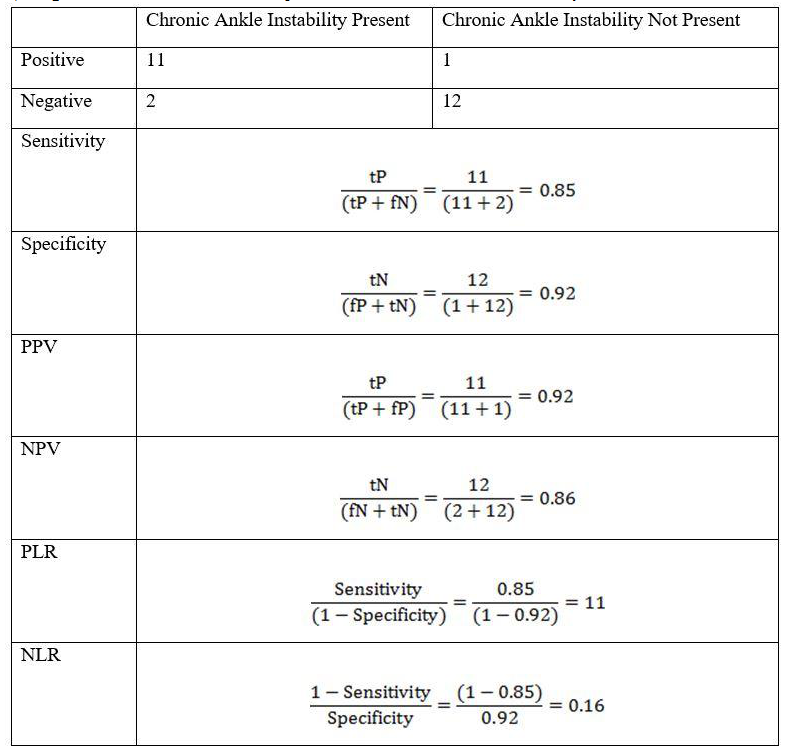Diagnostic Statistics for Balance Impairments with Chronic Ankle Instability fN, false negative; fP, false positive; NLR, negative likelihood ratio; NPV, negative predictive value; PLR, positive likelihood ratio; PPV, positive predictive value; tN, true negative; tP, true positive.
fN, false negative; fP, false positive; NLR, negative likelihood ratio; NPV, negative predictive value; PLR, positive likelihood ratio; PPV, positive predictive value; tN, true negative; tP, true positive.
According to the table, what is true of the negative post-test probability test value? Select all that apply.
A) The negative post-test probability that a person with a negative test result has chronic ankle instability is 14%.
B) The negative post-test probability that a person with a negative test result has chronic ankle instability is 86%.
C) The formula to calculate the negative post-test probability is tN/ (fN + tN) .
D) The negative post-test probability is the probability of having the condition given a negative test result.
Correct Answer:
Verified
Q8: Which is the formula for figuring out
Q9: What is true of the Youden index?
Q10: What is true about the area under
Q11: How does a receiver operating characteristic curve
Q12: What is true of sensitivity and specificity?
Q14: What is true of exposed event risk
Q15: False-negative rate is 1-specificity.
Q16: Sensitivity and specificity have an inverse relationship.
Q17: When using diagnostic tests, you want tests
Q18: The major advantage to predictive values is
Unlock this Answer For Free Now!
View this answer and more for free by performing one of the following actions

Scan the QR code to install the App and get 2 free unlocks

Unlock quizzes for free by uploading documents